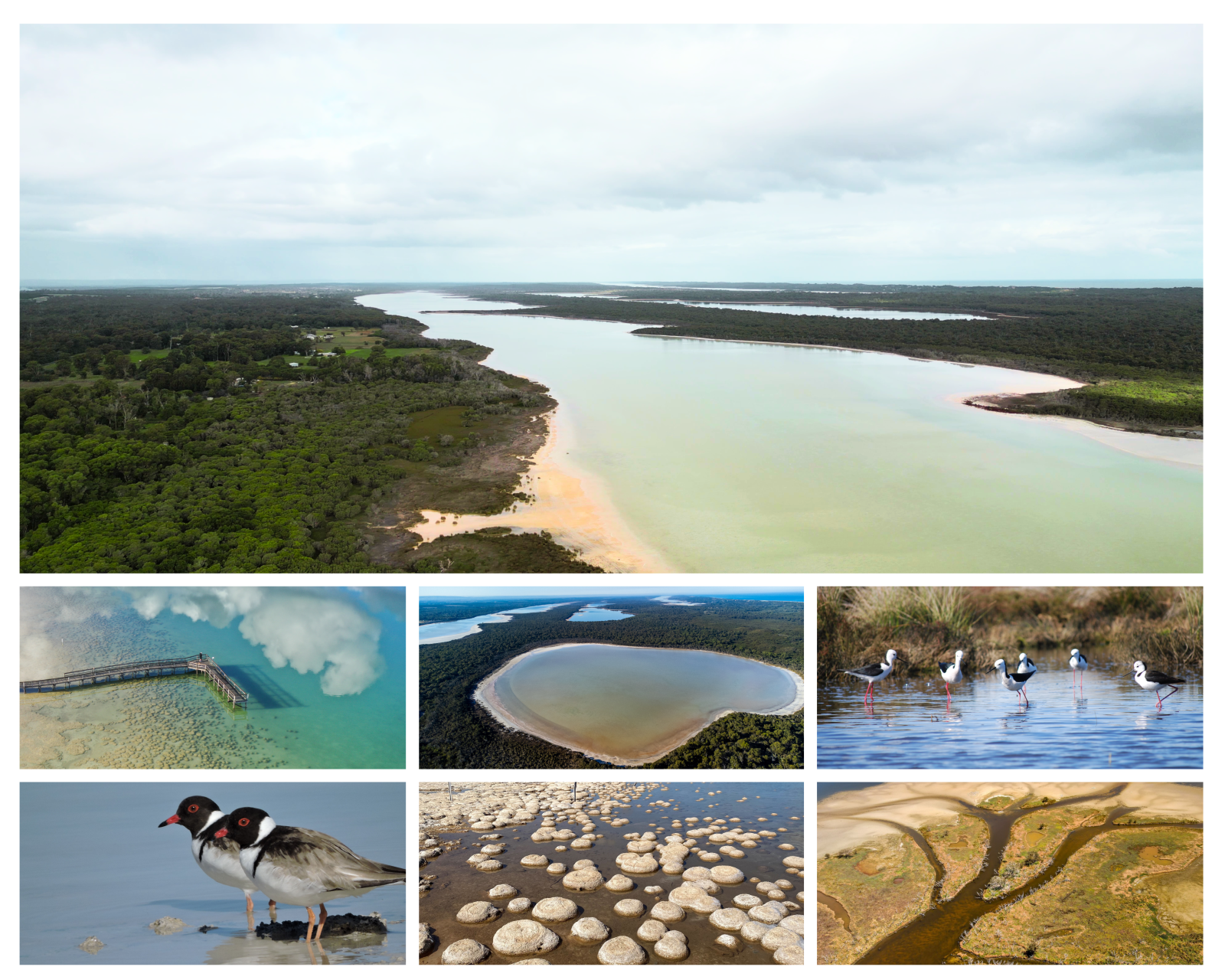Yalgorup National Park
Where Nature, History and Biodiversity Unite
Stretching along the coast between Mandurah and Preston Beach, Yalgorup National Park is one of Western Australia’s most ecologically significant landscapes. Spanning over 12,000 hectares, this remarkable park is a sanctuary for rare flora, ancient geological formations, and hundreds of species of birds and wildlife. It’s a place of quiet wonder and layered history, offering a truly immersive experience in nature.
Yalgorup is home to a chain of 11 lakes including Lake Clifton and Lake Preston, which together form a wetland system recognised internationally under the Ramsar Convention. These lakes, dunes, woodlands, and Tuart forests support an astonishing range of biodiversity and form an essential corridor for migratory birds.
Highlights:
- Thrombolites at Lake Clifton: Discover one of the planet’s most ancient living organisms—thrombolites. These 2,000-year-old rock-like structures are formed by microbial communities, providing a rare window into the Earth’s earliest life forms. A raised boardwalk allows for a close look without disturbing this fragile ecosystem. Interpretive signage tells the story of these fascinating fossils and their importance.
- Lime Kiln Ruins: Wander through history at the old limestone kiln off Newnham Road. Built in the early 1900s, this kiln once processed lime for building materials and agriculture. Today, it stands as a historical marker, offering insight into early European industry and settlement in the area.
- Ramsar-listed Wetlands: The lakes of Yalgorup support thousands of birds, including endangered and migratory species. Bird hides and peaceful walk trails provide prime viewing opportunities. Watch for black swans, spoonbills, pelicans, grebes, and even raptors. The wetland system is vital not only for its beauty but for its environmental significance on a global scale.
- Martin’s Tank Campground: Nestled among shady peppermint trees and close to Lake Clifton, Martin’s Tank offers a tranquil bush camping experience. Equipped with toilets, picnic tables, and gas barbecues, it’s a peaceful base for exploring the park’s trails and lakes.
- Flora and Fauna: Yalgorup is one of the few places in Western Australia where mature Tuart woodlands still thrive. The forest understorey blooms with orchids, kangaroo paws, and rare native wildflowers during spring. Wildlife includes kangaroos, emus, possums, frogs, and lizards, along with countless insects and butterflies. Echidnas and quenda are occasionally sighted, especially in quieter parts of the park.
- Cultural Heritage: The lakes and woodlands of Yalgorup hold deep cultural significance for the Noongar people, who have lived in the area for tens of thousands of years. The name “Yalgorup” is derived from the Noongar word “Yalgor”—meaning “place of water or swamp.” The area is part of a Dreaming trail, and many sacred sites remain protected within the park.
Trails and Walks:
- Lake Pollard Trail: A 6km return walk through peppermint and banksia woodlands ending at a serene bird hide overlooking Lake Pollard. Black swans gather here in large numbers between October and March.
- Heathlands Walk: A 4.5km loop that showcases the park’s stunning botanical diversity, with wildflowers, tuart groves, and coastal views. This Grade 2 trail is well-suited to casual walkers.
- Lake Preston Walking Trail: A short 2km return path from the Preston Beach information bay, this trail is wheelchair accessible and offers shaded seating and a birdwatching platform.
- Limestone Ridge & Woodland Paths: For those wanting to explore off the main tracks, smaller trails lead through the Tuart and peppermint woodlands, revealing quiet picnic spots and views over the wetlands.
For trails information, please see the Trails page.
